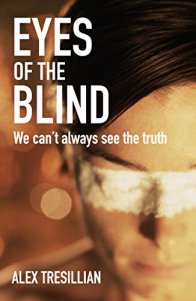
Benjamin Black is the pseudonym of Booker prize winning Irish author, John Banville, and Holy Orders is a detective story. It’s one of a series set in Ireland in the 1950s, and based around Quirke, a pathologist verging on alcoholism, and toying with depression. Quirke is a great name for this character as he’s got enough of them to easily fill a series like this, which consists of about 5 or 6 novels.
I first came across him in a televised mini-series which seems to be no longer available on the BBC here:
Quirke – Episode Guide
The Telegraph gave the series a poor review here
Telegraph Review
and though I hate to publicise that right wing rag, owned by non-domiciled non tax paying billionaires, who campaigned to leave the EU so they could maintain that cost efficient tax status, it is worth reading the review as it’s such a stinker.
Back to Holy Orders, which is the story of the death of a journalist in Dublin, a dark and sinister setting unredeemed by modernity and beset by gangsterism and corruption. During the course of the novel both the perpetrator of the murder, and the motive become clear, and the mystery is solved, but to be frank that’s not really the most important thing here, and it passes as a sort of afterthought in a novel that really focuses on Quirke and his dysfunctional personality.
Quirke was an orphan, adopted as a boy into a wealthy family and educated at a series of Catholic schools. In England these would be called public schools, though they offer a private fee paying education, and are not run by the state. In Ireland they are commonly sponsored by the church. I was reminded frequently of James Joyce’s A Portrait of the Artist as a Young Man, a popular A level text at one time, though much more rarely studied these days I think. In it there is a famous quotation in which Stephen Daedalus, the cipher for the author in this semi-autobiographical novel, describes Ireland as:
the old sow that eats its farrow.
an image of the country destroying, indeed feeding on its own children. Benjamin Black takes the whole concept a step deeper into darkness than Joyce appeared to, by focusing almost uniquely on the abuse that Quirke suffered at the hands of his teachers. When forced to return to a school similar to his own during the course of the investigation he has a panic attack and suffers hallucinations. In observing his thoughts, we see these formative experiences as the root of his current alcoholism and the problems he has in maintaining long term relationships.
Indeed the novel does focus on these relationships more than on the murder mystery, though Quirke’s journey of investigation takes us into a few interesting places, including the police department, the newspaper business, a tinkers’ camp and the unhappy home of a wealthy Irish couple.
Quirke has a daughter who he allowed to be brought up by his own adoptive brother after Quirke’s wife died in childbirth. Quirke felt he couldn’t cope with the responsibility, but has recently let her know the truth of her parenthood. As you can imagine this is not an easy relationship, and when the girl has to deal with a dawning awareness of her own lesbianism the situation is complicated further.
There is another woman in Quirke’s life. She is an actress just returned from a tour of Ireland where she played in Ibsen’s A Doll’s House. That in itself is an interesting choice – a play in which the female protagonist is in a terminally unsatisfactory relationship. But this woman is not at all like Nora: instead she is compliant and needy, seeking a long term and meaningful partnership that Quirke cannot provide.
Much of the novel focuses on these two characters, including the daughter’s burgeoning romantic feelings for the sister of the murder victim, and the murder itself is solved in a brief conversation buried away towards, but not quite at the end of the book.
As you might expect Banville writes very well. The characters are all interesting in their different ways, and the setting is well described, though it’s a dark and suffering place. The writer does create a real sense of Dublin in the 1950s. Because there are no modern appliances, few cars, no mobile phones or gadgets the setting becomes much more generic or universal, with the atmosphere of a film noir. Banville /Black does go overboard in describing the fashions of the time which he uses as a sort of shorthand to introduce and give life to the different characters, who all wear ties, or bow ties, or nylon stockings, or heavy dark suits depending on their gender and role.
However, I would certainly recommend this book. It’s rich and vibrant with character, reflection and description. It’s well written and I plan to read others in the series.
Advertisements Share this:




